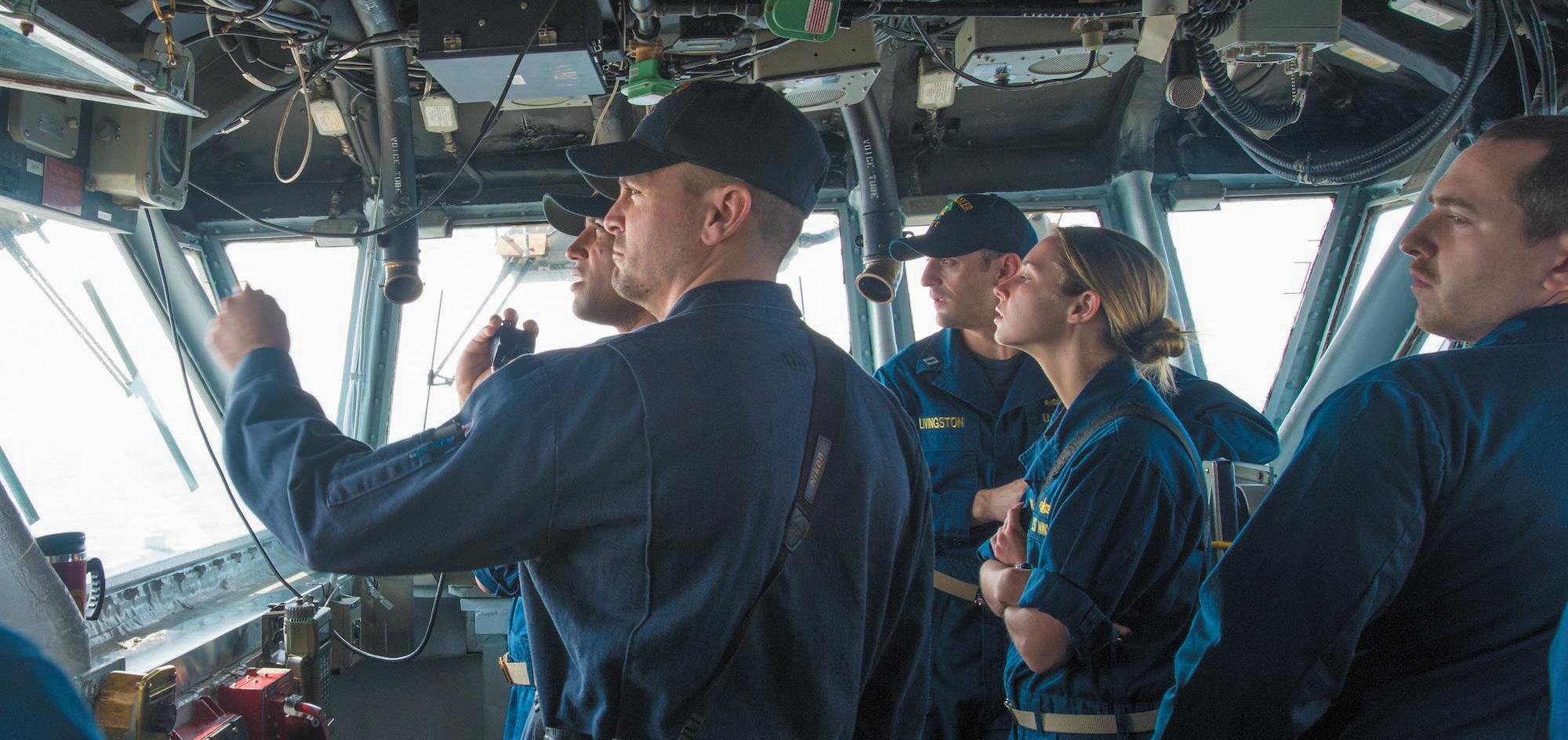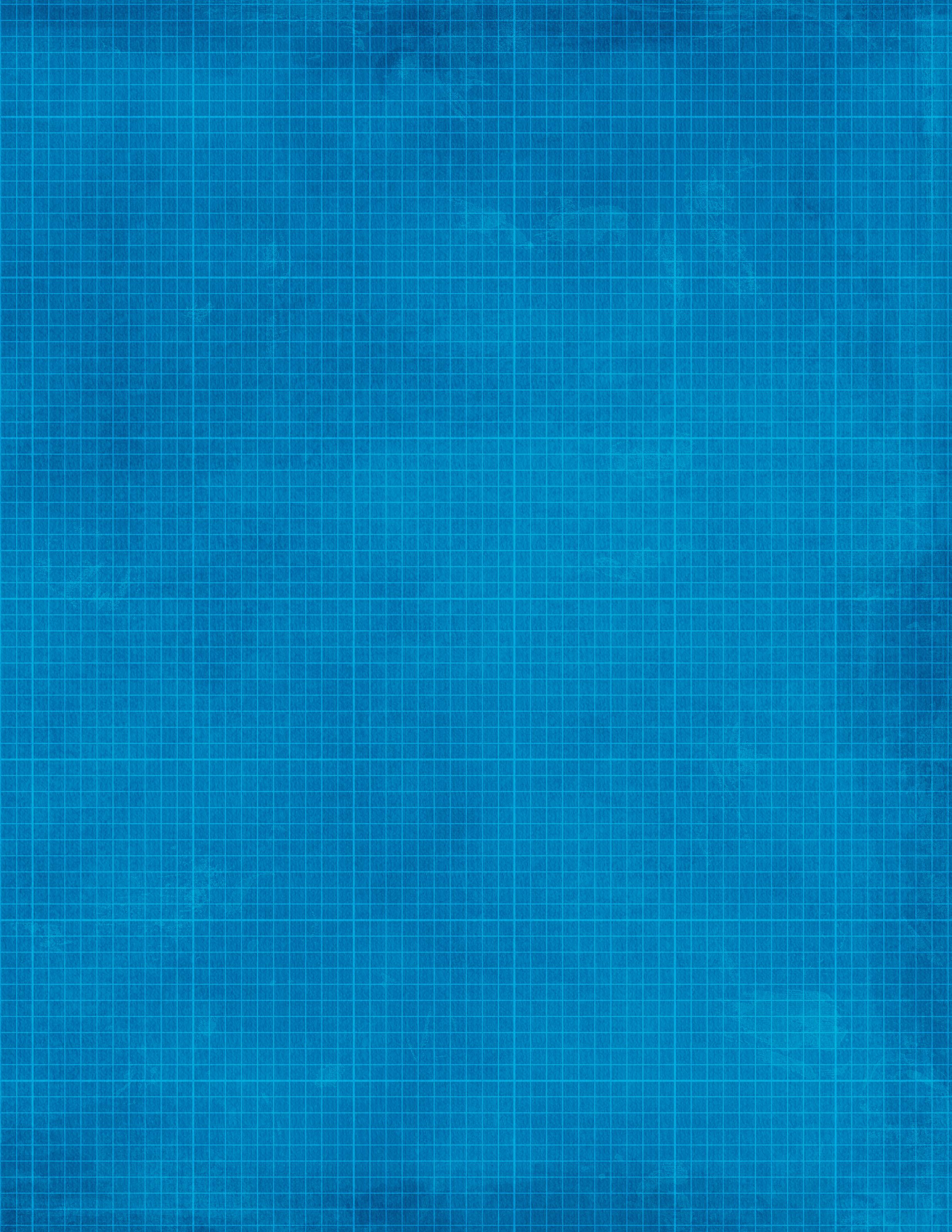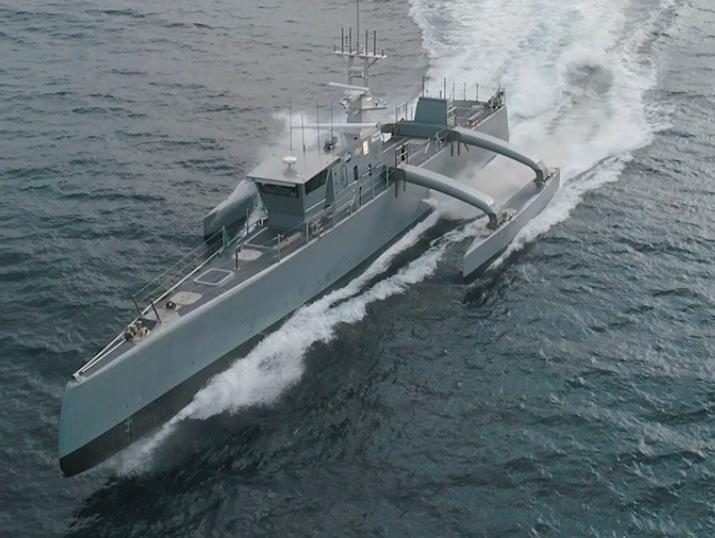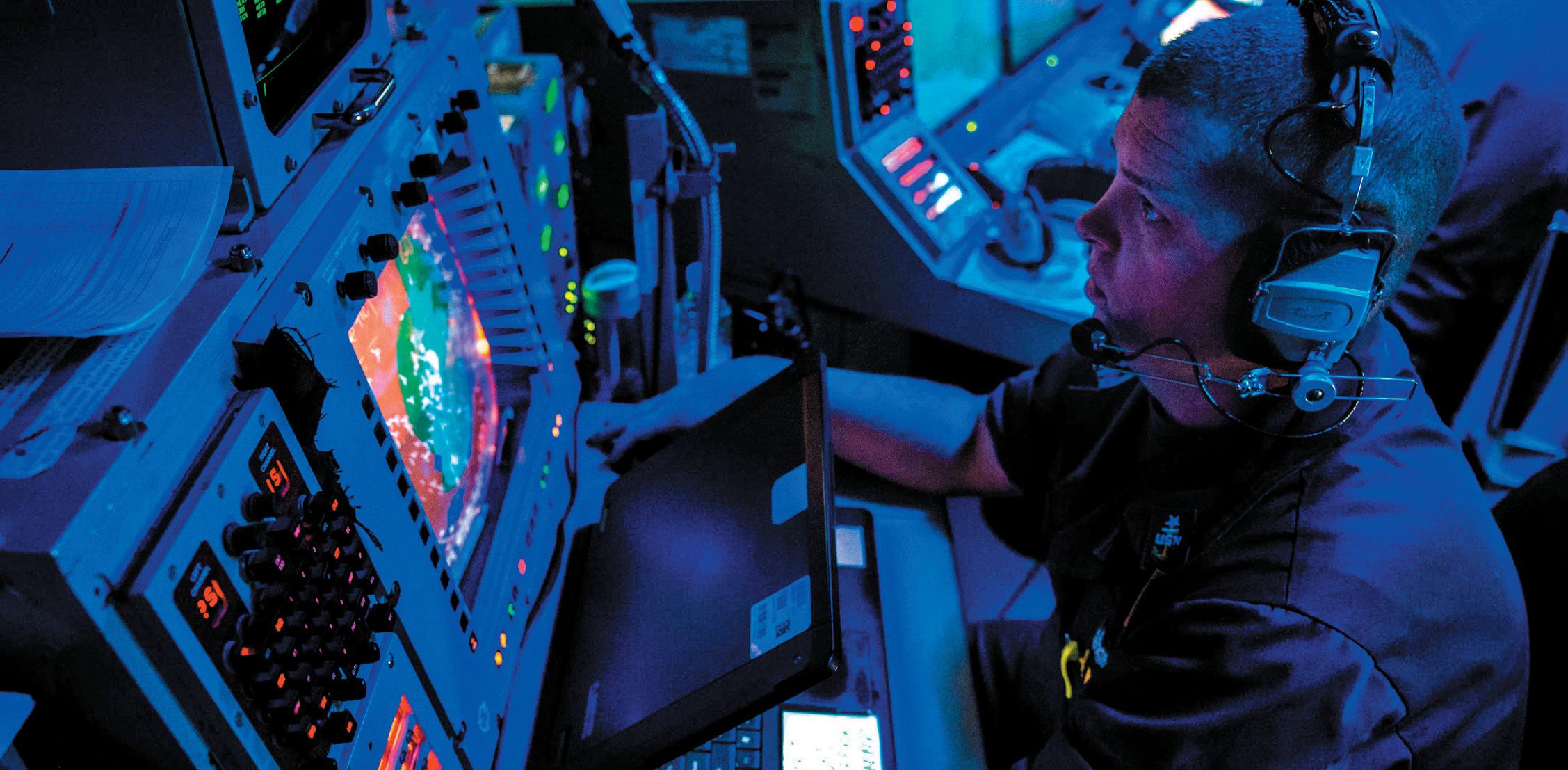
7 minute read
Surface Warfare The Competitive Edge
Story By Commander, Naval Surface Force, U.S. Pacific Fleet Public Affairs
Photo by Mass Communication Specialist Seaman Matthew F. Brown
Advertisement
Photo by U.S. Navy

Every day the Surface Force deploys and sustains combatcredible forces around the world to uphold the rules-based order, deny our rivals’ use of incremental coercion, and create the space for American diplomatic, political, economic, and technological advantages to prevail over the long term.
The Secretary of the Navy’s Tri-Service Maritime Strategy, Advantage at Sea, and the CNO’s Navigation Plan reinforce the Surface Force’s central role in deterrence, assurance, and warfighting.
Recognizing the need to be ready for future challenges, Vice Adm. Roy Kitchener, Commander, Naval Surface Forces, issued a call for action in Surface Warfare: The Competitive Edge, laying out Commander’s Intent to face current and future Force challenges and maintain the Surface Force’s warfighting advantage in the decade ahead.
“The demands of day-to-day conventional deterrence falls heavily on the Surface Force, and it is the actions the Force takes during peacetime that will prevent ruinous global war and ensure we prevail in the event deterrence fails,” said Vice Adm. Roy Kitchener, Commander, Naval Surface Forces/Naval Surface Force, U.S. Pacific Fleet. “A lethal, networked, forward-postured Surface Force that underpins the military’s contribution to integrated deterrence is a Surface Force that is poised to pivot to crisis and win in conflict.”
In Surface Warfare: The Competitive Edge, Kitchener details five broad lines of effort, assigning accountability, responsibility, and leadership roles while providing action items with prescribed timelines. Aligning the Force and the Surface Warfare Enterprise with this guidance ensures greater coherence and readiness in confronting a challenging future.
Develop the leaDer, Warrior, Mariner, anD Manager
This line of effort recognizes that people are central to accomplishing the mission. It aligns closely with the Surface Warfare Navy Leadership Development Framework (NLDF) and ensures that leaders–both officer and enlisted, active and reserve–are preparing themselves, their Sailors, and their crews to fight and win.
“People remain at the center of the Surface Force’s competitive advantage,” said Kitchener. “We will strengthen our intellectual and personal connections to build strong teams and greater resilience across the Force.”
Kitchener outlines how the Surface Warfare Combat Training Continuum (SWCTC) will be foundational to sharpening the warfighting skills of the Force by increasing opportunities for high-quality tactical training, improving education in the art of multi-domain Surface Warfare in the 21st century, and fostering a culture of warrior toughness throughout the Force.

proDuce More, reaDy ShipS

More, ready ships mean leveraging and harnessing the power of data analytics to be more effective in the force generation of today’s fleet. Improved maintenance and modernization planning and execution based on strategies that strengthen the industrial base. More effective certification processes, with increased depth in spares and parts, all based on analytics, is key to achieving desired outcomes.
“We need to think about what being “ready” means, and consider approaches that identify sufficient readiness guidelines outside of a one-size-fits-all pattern for ships, irrespective of their tasking,” said Kitchener. “We need to increase our application of data analytics in our entire readiness approach, and we’re off to a running start with nine analytical initiatives across the Force supporting this line of effort.”
The Surface Force will think differently about the fleet by leveraging data analytics in the next decade. Across the enterprise, there are nine analytical initiatives supporting this line of effort, which builds upon the progress in identifying recurring spare parts issues and tracking the health and readiness of our shipyards, industrial work force, and logistics supply chains.
Photo by U.S. Navy
What iS taSk Force greyhounD?
Task Group Greyhound (TGG) is a force generation initiative within the Optimized Fleet Response Plan (OFRP), the standard ship cycle construct that guides a roughly 36-month readiness roadmap. It is designed to provide the fleet with additional continuously ready, fully certified warships ready to accomplish a full range of on-demand missions. TGG assigns Arleigh Burkeclass guided-missile destroyers homeported at Mayport, Florida and Norfolk, Virginia to be at-the-ready to fill fleet commander requirements and to counter Russian naval threats to the homeland.
achieve excellence in Fleet introDuction
To fight and win in today’s strategic environment, the Surface Force is building a new force architecture. The seamless introduction of new platforms is critical to our success.
“The Surface Force is applying the lessons learned from both the successes and challenges of the past 50+ years of shipbuilding programs,” said Rear Adm. Brendan McLane, Commander, Naval Surface Force Atlantic. “We are applying those lessons to new ship designs to ensure required service life allowance margins and ship characteristics enable major capability upgrades more frequently throughout a ship’s life.”
Introducing a new platform of capability to the Force is not easy. The operational, logistical, training, administrative, and other support functions are significant. One of the critical tasks in this LOE is to reimagine the role of Fleet Introduction Teams in ensuring new platforms are delivered materially and logistically fit to fight.
At least 10 new platforms are expected to join the Force in the next decade. The Surface Force will also field a new generation of radars (SPY 6 and its variants), a new electronic warfare system (SEWIP Block III), counterC5ISRT capabilities, and the integration of lasers of increasingly high power that require heavily integrated power systems and combat systems.
New Surface Force platforms expected in the next decade:
ZUMWALT-Class Destroyers (DDG 1000) Arleigh Burke-Class Guided-Missile Destroyer DDG 51 (Flight III configuration) FLT IIA DDG 51 Class Modernization LCS Lethality and Survivability Upgrade Constellation-Class Guided-Missile Frigate (FFG 62) Light Amphibious Warship (LAW) Medium Unmanned Surface Vehicles (MUSV) Large Unmanned Surface Vehicles (LUSV) San Antonio-Class Amphibious Transport Dock LPD 17 (Flight II configuration) Next-Generation Guided-Missile Destroyers (DDG(X))



Large unmanned surface vessels (LUSV) USS Zumwalt (DDG 1000) Constellation-Class Guided-Missile Frigate (FFG 62)

create clear anD innovative operational conceptS
With the number and complexity of systems and platforms planned to join the fleet in the next decade, the requirement for clear and innovative operational concepts is critical.
The Surface and Mine Warfare Development Center (SMWDC), led by Rear Adm. Christopher Alexander, is the Surface Force’s center of warfighting excellence. SMWDC will be the center of surface warfighting innovation, experimentation, and virtual warfighting. SMWDC, supported by Commander, Surface Development Squadron One (SURFDEVRON 1), will develop doctrine regarding how the Surface Force operates and fights in the emerging force architecture. This doctrine will be integrated into other ongoing joint efforts like the Joint Warfighting Concept (JWC).
the iMportance oF the WarFare tacticS inStructorS (WtiS)
The Weapons Tactics Instructor (WTI) community is a key component in the development of new Surface Force doctrine. WTIs, pronounced “Witties,” are a cadre of officers trained to conduct advanced tactical training, doctrinal development, assessments of shipboard at-sea training, and serve in critical operational billets. These officers will develop a comprehensive Surface Force plan through coordination with requirements, acquisition, testing, training, and warfighting stakeholders.

Photo by U.S. Navy

What iS taSk Force hopper?
To give warships the competitive edge, Task Force Hopper was established and plays a leading role in “laying the keel” for Artificial Intelligence across the Surface Warfare Enterprise. Initial focus areas have included exploring how digital talent within the Force can be leveraged and retained, data governance, and working with stakeholders to scale AI and transition pilot projects to programs of record.
eStabliSh inFraStructure For the Future Force
Maintaining the Surface Force’s competitive edge for years to come requires considerable upgrades and modernization to our current infrastructure.
The Surface Force will require digital infrastructure investments to remain competitive, including hiring the right digital talent, obtaining platforms that enable digital exploitation, and creating new processes for how the Force conducts business as a community.
“Our ships are the most complex platforms in the Department of Defense, and every day, a single warship produces more than 115 terabytes of data,” said Kitchener. “The multi-mission nature of our platforms means that we also have the broadest spectrum of Artificial Intelligence/Machine Learning opportunities in the Navy, and we look forward to continuing our partnership with industry and academia to help us leverage AI quickly in these areas.”
The Surface Force will continue to meet the challenge of strategic competition and respond to the realities of the modern security environment. Our efforts are critical to preserve freedom of the seas, deter aggression, and win wars. “We will develop our people, their toughness, and their skills,” said Kitchener. “We will produce more, ready ships. We will improve the processes and milestones that move ships and systems from acquisition to fielding. We will improve our conceptual thinking. We will design and build all forms of infrastructure necessary for the future Force. The time to prepare is now.” *









